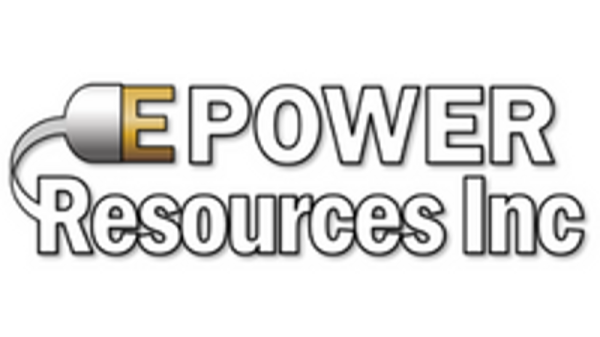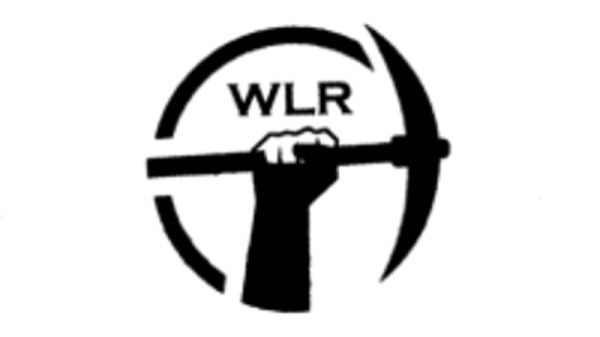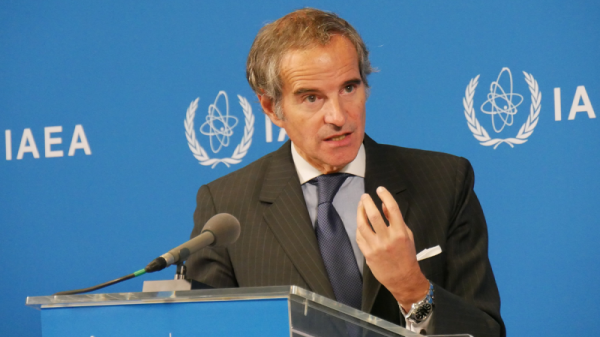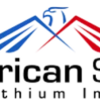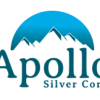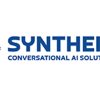Lithium prices rose to new all-time highs in November 2022, but 2023 was a hard year for the battery metal, with prices for carbonate and hydroxide both falling through April. While they recovered slightly in Q2, they fell back down in Q3 and continued down throughout the remainder of the year.
Much of this was due to a drop in demand in electric vehicles, particularly in China, which is facing a struggling economy. However, long-term demand remains, and many lithium mining companies have secured offtake deals for their future output. Still, it was a hard year for lithium companies, many of whom saw their share prices fall from the highs seen alongside lithium’s stellar price performance in recent years.
Even with easing prices, the lithium stocks profiled below were up significantly by the end of 2023. Below is a look at the top lithium stocks with year-to-date gains. The list below was generated using TradingView’s stock screener and data was gathered on January 4, 2024, for all exchanges except the ASX, which was gathered on January 5. It includes companies listed on the NYSE, NASDAQ, TSX, TSXV and ASX; all top lithium stocks had market caps above $10 million in their respective currencies when data was gathered.
Top US lithium stocks
1. Atlas Lithium (NASDAQ:ATLX)
Year-to-date gain: 358.8 percent; market cap: US$356.72 million; current share price: US$32.07
Atlas Lithium is a strategic minerals company with a portfolio of Brazilian battery metals projects. The company is currently focused on advancing and developing the Neves project area within its wholly owned Minas Gerais hard-rock lithium project. Last February, Atlas discovered the Anitta pegmatite target at Neves, and the company has been working since then to delineate a resource in and around the pegmatite. The State of Minas Gerais granted the Neves project priority review status for its environmental permitting and licensing in June, and Atlas intends to expedite it to Phase 1 production by Q4 2024.
In addition to developing Neves, Atlas plans to build a lithium processing plant that can produce up to 300,000 metric tons (MT) of lithium concentrate per year. In January, the company signed a memorandum of understanding with Mitsui (TSE:8031) for US$65 million of funding in tranches; in return, Mitsui will obtain the right to purchase 100 percent of the plant’s output. In a June update, Atlas announced it had purchased land for the plant and engaged consultants for planning and design.
Atlas’ share price peaked on May 2 at US$41.46, the day the company announced a royalty transaction with Lithium Royalty (TSX:LIRC,OTC Pink:LITRF); through the deal, Atlas received an immediate US$20 million for a 3 percent gross overriding revenue royalty. However, company shares plummeted to US$16.93 on May 4 before leveling out to trade around US$20 through the remainder of Q2.
In July, Atlas discovered a new zone at Anitta containing a new high mark for lithium mineralization: an interval between 9.2 and 10.3 meters from the surface grading 5.23 percent. On July 31, the company expanded the Anitta pegmatite trend and separated the trend into three zones — Anitta 1, Anitta 2 and the new Anitta 3. Atlas announced another discovery on September 20, a new spodumene pegmatite bearing “coarse, large crystals” it dubbed Anitta 4.
Atlas added industry veterans to a variety of positions in the second half of 2023, including Nick Rowley as vice president of business development on August 21, Martin Rowley as lead strategic advisor on September 26 and James Abson as chief geology officer on October 2. After gradually climbing through the quarter, its share price hit a Q3 high of US$30.64 on September 29.
In mid-October, the company released a new exploration strategy designed by Abson that will see Atlas’ technical team use a series of tests and surveys to identify, define and test additional LCT pegmatites at Neves, and a specialized exploration geology team perform reconnaissance work on the larger Minas Gerais lithium project. On November 8, the company completed a US$20 million investment round led by Martin Rowley.
Atlas announced in December that it was fully funded to expedite first production from an open pit at Anitta 2 to Q4 2024 thanks to a combined US$50 million in direct investment and offtake agreements for Phase 1 spodumene concentrate production from lithium chemicals companies Chengxin Lithium Group (SZSE:002240) and Yahua Industrial Group (SZSE:002497). To accomplish the earlier production, Atlas plans to use modular dense media separation plants, a first in Brazil. Phase 1 will have nameplate capacity of 150,000 MT, 80 percent of which has been claimed in the offtake agreements, and Phase 2 in 2025 will raise production to 300,000 MT.
Atlas ended 2023 with a share price of US$27.31, and its first news of the new year came in the form of positive exploration results for Anitta 3 and 4, which the company stated “showcase the potential for significant lithium mineralized zones close to surface with attractive widths for open pit mining.”
2. Sigma Lithium (NASDAQ:SGML)
Year-to-date gain: 14.11 percent; market cap: US$3.21 million; current share price: US$29.27
Sigma Lithium, through its wholly owned subsidiary Sigma Brazil, brought its Grota do Cirilo hard-rock lithium project in Minas Gerais to Phase 1 production at 75 percent nameplate capacity on April 17, 2023. As part of Phase 1, the company commissioned a greentech dense media separation production plant, and as of December, the plant is sustaining full capacity of 270,000 MT per year. If Phase 2 and Phase 3 proceed, the final target is 766,000 MT.
Sigma refers to its battery-grade sustainable lithium concentrate product as Quintuple Zero Green Lithium, because it is net zero carbon and uses zero coal power, hazardous chemicals, tailings dams or potable water, instead using 100 percent clean energy, dry-stacked tailings and fully recycled water. At COP28, it was declared the “most sustainable lithium in the world.”
The company’s share price trended upwards throughout much of H1. On April 10, Sigma Lithium announced that COPAM, the Minas Gerais state environmental regulator, had awarded Sigma its environmental operating license for Grota do Cirilo, which allows the company to sell all of its lithium from current and future operations.
Sigma announced the signings of a 300,000 MT green tailings offtake agreement and a 15,000 MT green lithium sale on May 3, both of which were with Yahua. The company’s share price climbed over the following two weeks to reach a 2023 high of US$42.50 on May 17. In September, it reported a partnership with Glencore (LSE:GLEN,OTC Pink:GLCNF) in which Glencore will purchase its green lithium at a premium, with 50 percent paid ahead of shipment at a price 9 percent above the LME.
Sigma has also continued to explore Grota do Cirilo to build out the property’s resource. In November, the company shared the results of its Phase 4 drill campaign, which it expects to increase Grota do Cirilo’s mineral resource estimate by 25 percent to 110 million MT, and it also shared plans for an accelerated Phase 5 campaign.
As Sigma Lithium, Sigma Brazil and the project became acquisition targets in 2023, Sigma’s board of directors began performing a strategic review to assess its options. Its latest update came on December 18, when Sigma announced it had “entered contractual and detailed structural negotiations with finalists,” which were still ongoing. At the time, it also shared its intentions to list Sigma Brazil on the NASDAQ and Singapore Stock Exchange in order to maximize shareholder value, which it later initiated on January 1.
On December 27, Sigma wrapped up the year with an update covering many aspects of the business. Its share price as of the close of trading for the year was US$31.53.
Top Canadian lithium stocks
1. Portofino Resources (TSXV:POR)
Year-to-date gain: 150 percent; market cap: C$12.94 million; current share price: C$0.075
Portofino Resources is a lithium exploration company operating in Argentina and Canada. In Argentina, the company now wholly owns the Yergo project in Catamarca and just announced a 50/50 partnership with Lithium Chile (TSXV:LITH,OTCQB:LTMCF) for the 8,445 hectare Arizaro Area IV concession in Salta. Its Canadian lithium property is the Allison Lake North project in Northern Ontario, for which it filed a technical report at the beginning of 2023, and it also holds a portfolio of gold properties in the country.
Portofino was in a state of flux coming into 2023. The company was facing a legal dispute at the Yergo project, for which it had an earn-in agreement, after the claim owner and optioner filed a notice of termination in September 2022. Portofino rejected the termination as it claimed it did not breach the agreements and was granted an injunction against the owner the following month as it assessed its options. Additionally, Portofino had been performing due diligence at on concessions at the Arizaro Salar, for which it had a memorandum of understanding with state mining company REMSA, and in February shared that it had filed a joint venture proposal for Arizaro IV.
Its shares began climbing from their opening price of C$0.03 when the company released its 2023 plans on February 1, and moved higher on the completion of a C$735,000 private placement on February 27, reaching an H1 high of C$0.075 on March 3 before falling down to trade around C$0.04 in much of Q2 and early Q3.
However, Portofino’s share price took off in earnest in August following a series of announcements, such as the closing of a C$538,000 financing on August 1 and the creation of an advisory board that includes Alexander Molyneux and Blake Steele on August 4. The biggest jump came from a major update on August 14, when Portofino announced that it was executing its option to buy out its option agreements and acquire 100 percent of the Yergo project.
Its final news for the month came on August 23, when the company announced it submitted proposals for the Arizaro III and IV concessions through a public tender process. Its share price hit a year-to-date high of C$0.10 on August 30 and touched that peak again on September 21 when it closed an upsized C$965,000 financing.
Following the official closing of the Yergo acquisiton on September 26, the company shared on November 1 its pre-drilling exploration plans for the project, including expanded surface and subsurface sampling, which it said it would commence that month. Portofino’s share price ended 2023 at C$0.075.
The company’s only news so far in 2024 was the aforementioned ultimate result of the Arizaro tender: a partnership with Lithium Chile, which had also submitted an offer for the concession. The company brings exploration success and infrastructure from its nearby work to the partnership. The partners are aiming to begin drilling soon and quickly advance the project.
2. Volt Lithium (TSXV:VLT)
Year-to-date gain: 122.73 percent; market cap: C$29.97 million; current share price: C$0.245
Volt Lithium is focused on becoming a producer of lithium hydroxide and lithium carbonate from oilfield brines at its Rainbow Lake project in Alberta and from brines across North America using its proprietary direct lithium extraction (DLE) technology. On April 27, the company changed its name from Allied Copper to Volt Lithium, which was previously the name of the company’s lithium division.
The company started 2023 with a share price of C$0.11 and has trended up significantly throughout the year. On April 6, Volt Lithium announced a breakthrough with its DLE technology. The new version, IES-300, maintains IES-200’s 93 percent lithium recoveries and reduces the amount of reagent required, lowering operating costs. The company’s share price spiked significantly on the news and stayed elevated, reaching a year-to-date high of C$0.52 on May 15.
On May 18, Volt Lithium shared its initial mineral resource report for Rainbow Lake, reporting an inferred mineral resource of 4.3 million metric tons (MT) of lithium carbonate equivalent. The property has an estimated 99 billion barrels of brine with concentrations of up to 121 milligrams per liter. A week later, the company released the final results of its DLE pilot project, which included 97 percent lithium recovery from 120 mg/L and 90 percent recovery from concentrations as low as 34 mg/L.
Volt Lithium’s share price fell at the end of May and trended downwards through August, but saw a big upswing in mid-August after the company announced on August 17 it had terminated its option agreements for its two copper assets, finishing its full transition to a pure-play lithium company. It ultimately reached an H2 high of C$0.38 on September 11 following the company appointing director Lt. General Andrew Leslie as the new chair of the board.
On October 24, Volt shared that it has commissioned its permanent demonstration plant, which it says is “capable of testing oilfield brines from multiple basins across North America in real-time.” The permanent plant, which is located in Calgary, Alberta, features improvements on the pilot plant based on nanotech and water processing technology collaborations announced during the summer that allow it to process oilfield brines from across North America.
Its final news of the year came on December 14, when it released the preliminary economic assessment for Rainbow Lake, highlighting an expected operating life of 19 years with annual battery-grade lithium- hydroxide production of 1,000 MT in Phase 1, 5,000 MT in Phase 2 and 23,000 MT in Phase 3. Its share price ended the year at C$0.225.
3. Solis Minerals (TSXV:SLMN)
Year-to-date gain: 87.5 percent; market cap: C$12.74 million; current share price: C$0.15
Solis Minerals is an exploration company focused on battery metals properties in South America. The company is focused on its Estrela and recently acquired Mina Verhelma lithium projects in the Borborema province in Northeastern Brazil.
Earlier this year, news of its agreement to acquire the Jaguar hard-rock project, which has confirmed spodumene grades of up to 4.95 percent in oxidized pegmatite, resulted in a stratospheric share price jump. Trading was suspended from May 29 to June 8, during which time Solis announced the binding agreement and an AU$8.16 million funding package. When trading resumed, the company’s share price shot up to C$0.65. The first tranche of the placement, totaling AU$3,050,000, was closed on June 19, and the company began drilling at Jaguar on June 23. Its share price reached a 2023 high of C$1.04 on July 4.
However, these highs didn’t last long. The company’s trading was paused again on July 17 pending maiden drill results from Jaguar, and when trading resumed later that morning, its price plummeted by over 50 percent to close at C$0.37. In a September exploration update, Solis stated it was renegotiating its binding agreement for Jaguar to extend the due diligence period so it could better evaluate the project, but in October the company announced the negotiations failed and it had elected to withdraw from Jaguar.
That news was shared as part of its October 12 announcement that it had entered into an option agreement for the Mina Verhelma project, which includes a 12 month due diligence period. Solis began its maiden drilling programs at Estrela and Mina Verhelma in Q4. In its latest update on the exploration, the company’s executive director stated that several target areas contained visible spodumene-bearing pegmatites, and the initial holes at Mina Verhelma contained significant widths.
After the initial run in the middle of the year, Solis’ share price spent much of 2023 trending downwards, and ultimately ended the year at C$0.14.
Top Australian lithium stocks
1. Wildcat Resources (ASX:WC8)
Year-to-date gain: 2660 percent; market cap: AU$831.06 million; current share price: AU$0.69
Wildcat Resources is a lithium and gold explorer with an eye on Australia’s top mining provinces. The company’s lithium projects are its Tabba Tabba lithium-tantalum project and its Bolt Cutter lithium project in Western Australia’s Pilbara region.
Wildcat’s share price spent early 2023 trading around AU$0.03 before it took off on May 17 when the company entered into a binding agreement to acquire Tabba Tabba, which was last explored in 2014. By the end of Q2, its share price had climbed AU$0.155, and it continued to move upwards through the majority of Q3. Following early surveying and field work that identified new pegmatites, Wildcat spent July and August drilling to discover priority targets. On September 18, Wildcat released the first assays from the exploration, which confirmed “high-grade lithium mineralisation from surface in northern and central pegmatite clusters.”
The company’s share price began Q4 at AU$0.49. On October 12, Wildcat completed its 100 percent acquisition of Tabba Tabba and shared the second batch of assays, highlighting the Leia pegmatite in the central cluster. However, it was the third batch of results released on October 22 — which included an interval at Leia of 85 meters grading 1.5 percent lithium oxide — that sent the company’s share price climbing to new heights.
Significant announcements continued coming in the following weeks. On October 26, Wildcat announced multiple changes to its leadership team, including the transition of non-executive director AJ Saverimutto to managing director and CEO, and on October 31, it announced that Mineral Resources (ASX:MIN,OTC Pink:MALRF) had become a substantial shareholder and now held a 19.85 percent stake in Wildcat after Global Advanced Metals, once Wildcat’s largest shareholder, sold its stake to MinRes.
The company’s share price climbed to a year-to-date high of AU$0.915 on November 5, which saw the release of its annual general meeting results and assays from Leia that included multiple thick, high-grade intervals with a highlight of 180 meters grading 1.1 percent lithium oxide. Days later, on November 9, Wildcat announced it successfully raised AU$100 million in a placement that included investments from major institutions and its own shareholders. Among other things, the proceeds will go towards accelerating drilling and development studies at Tabba Tabba, as well as exploration at Bolt Cutter and its other projects.
Following its November highs, the company’s share price trended downwards near the end of the month before stabilizing in December, ultimately closing the year at AU$0.695. Wildcat’s final Tabba Tabba news for 2023 came on December 20, when it released the first diamond drill results at the Leia pegmatite. These results continued the trend of thick, high-grade mineralization, with five holes containing stretches between 92 to 135 meters. At that time, Leia had been extended to 2.2 kilometers in strike with a width of 180 meters open. To start 2024, Wildcat recommenced exploration with an upgraded work camp.
2. Latin Resources (ASX:LRS)
Year-to-date gain: 113.64 percent; market cap: AU$698.45 million; current share price: AU$0.24
Latin Resources is focused on exploring its Salinas pegmatite project in Brazil’s Aracuai lithium province, which hosts the Colina, Colina West and Fog’s Block targets. Latin Resources expanded the project by over 350 percent in February, when it acquired tenements covering 29,940 hectares in the region. It also owns the Catamarca pegmatite project in Argentina and an 18 percent interest in Solis Minerals (TSXV:SLMN,OTCQB:SLMFF), a battery metals company in South America.
At the end of March, Latin Resources signed a memorandum of understanding with two Minas Gerais state government entities that will help the company as it develops Salinas and support building a lithium battery sector in the state. The government has designated Salinas a priority project. In April, the company completed a private placement of AU$37.1 million.
On June 20, Latin Resources released an updated resource estimate for the Colina deposit that increased its previous resource by 241 percent, which sent the company’s share price flying upward from AU$0.20 to AU$0.28 over the following days. On June 28, it announced discoveries of two spodumene-rich pegmatites, indicating a “‘district scale’ lithium corridor within Latin’s tenements” that extends up to 26 kilometers southwest of the Colina deposit. Latin Resources’ share price continued climbing over the following month and hit a year-to-date high of AU$0.42 on August 3.
That month, the company released further high-grade assays as well as the results of metallurgical testing of Colina ore using dense media separation, which yielded spodumene concentrate grading 5.5 percent lithium oxide at a 93.1 percent recovery rate. Latin Resources ended Q3 by releasing a preliminary economic assessment for Colina, which it is now referring to as the Colina project. According to the document, the mine would have a two stage plan with anticipated Phase 1 annual production of 405,000 MT of 5.5 percent lithium spodumene concentrate with first production in 2026.
On October 29, the company announced that it had received a significant amount of interest in offtake partnerships for its future lithium since the release of its PEA, and was now beginning an offtake partner process to assess proposals.
In the second half of November, the company announced a new major spodumene discovery at Salinas, dubbed Planalto, and shared further high-grade results from Colina. Although its share price fell through much of that month, it turned around in December with the release of its updated mineral resource estimate for Colina and a maiden inferred estimate for Fog’s Block. The former’s resource is up 41 percent over June’s estimate, now reaching 63.5 million MT grading 1.3 percent lithium oxide, and the latter’s resource measured 6.8 million MT grading 0.9 percent.
Latin Resources ended 2023 with a share price of AU$0.285. The company plans to begin diamond drilling Colina and Fog’s Block in January and work towards another resource estimate update and its definitive feasibility study expected in mid-2024.
3. Future Battery Minerals (ASX:FBM)
Year-to-date gain: 41.51 percent; market cap: AU$38.43 million; current share price: AU$0.08
Previously Auroch Minerals, Future Battery Minerals changed its name in March to reflect its focus on lithium and nickel. The company has been particularly focused on its lithium projects, the wholly owned Kangaroo Hills hard-rock project in Western Australia and the 80 percent owned Nevada claystone project in Nevada, US.
FBM’s share price began climbing in late March as the company released news from its exploration. At Kangaroo Hill, the company’s Phase 1 drilling intersected thick, high-grade lithium-cesium-tantalum (LCT) pegmatites, and its diamond drilling completed in May identified seven high priority targets, FBM announced on June 7, including Big Red and Rocky.
At Nevada, the company discovered high-grade lithium claystone in April at the Western Flats prospect, and began Phase 2 drilling targeting three prospects on June 5. FBM’s share price hit a year-to-date high of AU$0.13 on June 12.
The Nevada drilling confirmed that its Lone Mountain prospect hosts shallow, thick lithium-bearing claystone, and the company described the results as exceptional, with one highlight of 179.8 metres grading 766 parts per million lithium. Big news came for Kangaroo Hills as well; on August 23, FBM shared that results from its Phase 3 drilling at Kangaroo Hills indicated “a far greater lithium-bearing system at the Rocky and Big Red Prospects than originally anticipated” and significantly increased the project’s size and tonnage. On September 14, FBM announced it received firm commitments for a AU$7.6 million placement to fund exploration at both its projects, and the company’s share price climbed to match its previous high that day.
FBM spent Q4 completing further drilling at both of its project, aiming to extend the strike of the pegmatite swarm at Kangaroo Hill’s Big Red and Rocky prospects and test the Lone Mountain claystone target at Nevada, respectively. While FBM continued to release results during the quarter, its share price began falling in mid-October, a month that also saw multiple board members retire and a shift in leadership as Nick Rathjen became managing director and CEO and Mike Edwards stepped down to become a non-executive chairman.
It fell further on November 15 alongside the release of assays from Phase 3 drilling at Rocky, in which FBM reported that while the Rocky prospect has a shallow continuous mineralized system, compared to the Big Red prospect, it is thinner and lower grade on average. The company said it planned to focus on extending Big Red to the north, as well as drill further targets in that region. To that end, on December 18, the company released results of its optimised resistivity survey that covered Kangaroo Hills’ northern region. The survey identified the Big Red North and Big Red West targets and extended the larger Big Red strike length to over 2.2 kilometers, and also expanded and refined other existing targets.
FBM ended 2023 with a share price of AU$0.073. In Q1 2024, the company intends to begin drilling some of the northern targets at Kangaroo Hills and to release the maiden mineral resource estimate for Nevada.
FAQs for investing in lithium
How much lithium is on Earth?
While we don’t know how much total lithium is on Earth, the US Geological Survey estimates that global reserves stand at 22 billion MT. Of that, 9.2 billion MT are located in Chile, and 5.7 billion MT are in Australia.
Where is lithium mined?
Lithium is mined throughout the world, but the two countries that produce the most are Australia and Chile. Australia’s lithium comes from primarily hard-rock deposits, while Chile’s comes from lithium brines. Chile is part of the Lithium Triangle alongside Argentina and Bolivia, although those two countries have a lower annual output.
Rounding out the top five lithium-producing countries behind Australia and Chile are China, Argentina and Brazil.
What is lithium used for?
Lithium has a wide variety of applications. While the lithium-ion batteries that power electric vehicles, smartphones and other tech have been making waves, it is also used in pharmaceuticals, ceramics, grease, lubricants and heat-resistant glass. Still, it is largely the electric vehicle industry that is boosting demand.
Is lithium a good investment?
The lithium price has seen huge success over the past year, and many stocks are up alongside that. It’s up to investors to decide if it’s time to get in on the market, or if they’ll try to wait for a dip.
A wide variety of analysts are bullish on the market as electric vehicles continue to prosper, and lithium demand from that segment alone is expected to continue to rise. These experts believe the lithium story’s strength will continue over the next decades as producers struggle to meet rapidly growing demand.
How to invest in lithium?
Unlike many commodities, investors cannot physically hold lithium due to its dangerous properties. However, those looking to get into the lithium market have many options when it comes to how to invest in lithium.
Lithium stocks like those mentioned above could be a good option for investors interested in the space. If you’re looking to diversify instead of focusing on one stock, there is the Global X Lithium & Battery Tech ETF (NYSE:LIT), an exchange-traded fund (ETF) focused on the metal. Experienced investors can also look at lithium futures.
How to buy lithium stocks?
Lithium stocks can be found globally on various exchanges. Through the use of a broker or an investing service such as an app, investors can purchase individual stocks and ETFs that match their investing outlook.
Before buying a lithium stock, potential investors should take time to research the companies they’re considering; they should also decide how many shares will be purchased, and what price they are willing to pay. With many options on the market, it’s critical to complete due diligence before making any investment decisions.
It’s also important for investors to keep their goals in mind when choosing their investing method. There are many factors to consider when choosing a broker, as well as when looking at investing apps — a few of these include the broker or app’s reputation, their fee structure and investment style.
Securities Disclosure: I, Lauren Kelly, currently hold no direct investment interest in any company mentioned in this article.
















